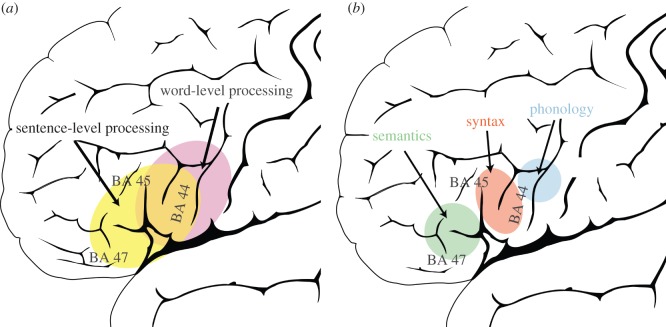Figure 2.
The left inferior frontal gyrus (LIFG) is divided into pars opercularis, pars triangularis and pars orbitalis in the anatomical system of nomenclature, which follows the gyri and sulci. These areas roughly correspond to BA 44, 45 and 47, respectively, using cytoarchitectonic nomenclature. We illustrate two simplified models of the rostro-caudal temporal abstraction gradient. (a) Subregions in the LIFG can be segregated between sentence-level processing (processing of sequences of words) versus word-level processing (processing of sequences of sublexical items, e.g. syllables or phonemes). (b) A more fine-grained subdivision in LIFG between semantics, syntax and phonology is depicted. We note that there are word-level processes that engage the anterior LIFG and sentence-level processes that engage the posterior LIFG. The left-hand model suggest that on average word-level processes, in particular on words embedded within sentences, activate more posterior parts of the LIFG than sentence-level processes. The right-hand model should be understood in the same way, mutatis mutandis.

